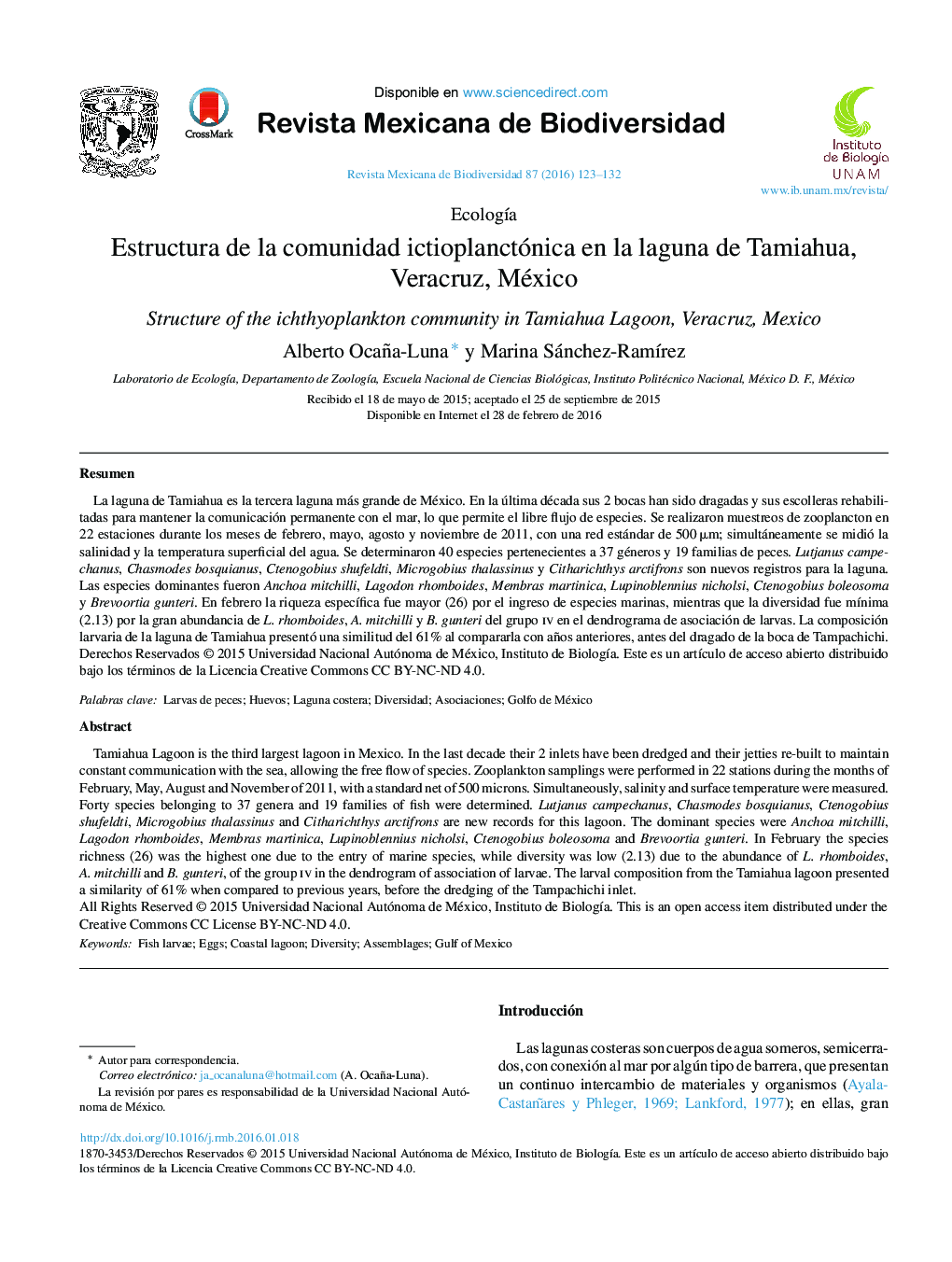| Article ID | Journal | Published Year | Pages | File Type |
|---|---|---|---|---|
| 4461340 | Revista Mexicana de Biodiversidad | 2016 | 10 Pages |
ResumenLa laguna de Tamiahua es la tercera laguna más grande de México. En la última década sus 2 bocas han sido dragadas y sus escolleras rehabilitadas para mantener la comunicación permanente con el mar, lo que permite el libre flujo de especies. Se realizaron muestreos de zooplancton en 22 estaciones durante los meses de febrero, mayo, agosto y noviembre de 2011, con una red estándar de 500 μm; simultáneamente se midió la salinidad y la temperatura superficial del agua. Se determinaron 40 especies pertenecientes a 37 géneros y 19 familias de peces. Lutjanus campechanus, Chasmodes bosquianus, Ctenogobius shufeldti, Microgobius thalassinus y Citharichthys arctifrons son nuevos registros para la laguna. Las especies dominantes fueron Anchoa mitchilli, Lagodon rhomboides, Membras martinica, Lupinoblennius nicholsi, Ctenogobius boleosoma y Brevoortia gunteri. En febrero la riqueza específica fue mayor (26) por el ingreso de especies marinas, mientras que la diversidad fue mínima (2.13) por la gran abundancia de L. rhomboides, A. mitchilli y B. gunteri del grupo iv en el dendrograma de asociación de larvas. La composición larvaria de la laguna de Tamiahua presentó una similitud del 61% al compararla con años anteriores, antes del dragado de la boca de Tampachichi.
Tamiahua Lagoon is the third largest lagoon in Mexico. In the last decade their 2 inlets have been dredged and their jetties re-built to maintain constant communication with the sea, allowing the free flow of species. Zooplankton samplings were performed in 22 stations during the months of February, May, August and November of 2011, with a standard net of 500 microns. Simultaneously, salinity and surface temperature were measured. Forty species belonging to 37 genera and 19 families of fish were determined. Lutjanus campechanus, Chasmodes bosquianus, Ctenogobius shufeldti, Microgobius thalassinus and Citharichthys arctifrons are new records for this lagoon. The dominant species were Anchoa mitchilli, Lagodon rhomboides, Membras martinica, Lupinoblennius nicholsi, Ctenogobius boleosoma and Brevoortia gunteri. In February the species richness (26) was the highest one due to the entry of marine species, while diversity was low (2.13) due to the abundance of L. rhomboides, A. mitchilli and B. gunteri, of the group iv in the dendrogram of association of larvae. The larval composition from the Tamiahua lagoon presented a similarity of 61% when compared to previous years, before the dredging of the Tampachichi inlet.
